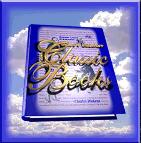World's Greatest Classic Books Feature:
Emily Jane Brontė
Featured works:
All
Books Written By
Emily Jane Brontė
BOOK LINKS
abebooks.co.uk.
A&E Shop
All-Ink.com
AlphaCraze.com
Amazon.ca
Amazon.com
Amazon.co.uk
BookCloseOuts.com
Booksamillion.com
Chapters.ca
eCampus.com
MUSIC LINKS
Music123
OldGlory.com
PlayCentric
PosterNow
PushPosters
Tower Records
SEARCH THE WEB
looksmart.co.uk
People-Finder.com
Search. Get Paid. Be Smart.
Died: December 19, 1848, in Haworth, Yorkshire, England
Emily Brontė's reputation as a writer stands on one work, Wuthering Heights, which is noted for its timeless qualities.
Brontė's father was an Irish-born, Anglican clergyman who held many curacies before moving with his wife and six children to a position in Haworth in 1820. The rector changed his name to Brunty, a more common form of Brontė. Soon after the move, Emily's mother and two older sisters died. The remaining children were raised with the help of an aunt, Elizabeth Branswell.
After the death of their mother in 1824, the Brontė children lived more or less alone in the moorland rectory where they spent their time writing and creating stories about their magical kingdoms of Angria and Gondal. Emily's formal education began at Clergy Daughters School at Cowan's Bridge, Lancaster in 1824. She returned home in 1825 and spent the next five years on the moor in Haworth. In 1835, Emily attended Miss Woller's school at Roe Head where her older sister, Charlotte, was teaching.
In 1838, Emily briefly tried her hand at teaching, but retired after six months. In 1842, Emily and her sister, Charlotte, went to Brussels to study languages with the intent of opening a school close to their family in Haworth. When her aunt died later that year, Emily returned to Haworth permanently.
When her sister, Charlotte, discovered that all the sisters had written poetry, they published a volume of verse under the names Currer, Ellis, and Acton Bell. The pseudonyms were an attempt to avoid attention that was considered inappropriate for women during this era. The disguise was unnecessary because the publication sold only two copies.
Wuthering Heights is the only significant work that Emily produced. Unlike typical Victorian prose, the book is considered masculine in tone, and sometimes violent. The novel was published in 1847 along with two other works by her sisters. Brontė relied on her own imagination when creating a story based upon primitive energies such as love and hate, revenge and loyalty.
It was not until later that the story was fully appreciated as a timeless work. The novel was initially considered by critics as savage, animal-like and clumsy in construction. Some have suggested that parts of the book may have been written by Emily's brother, Patrick Branswell, but there is a lack of evidence to support this theory. Soon after the publication Brontė's health failed and she died of tuberculosis in December 1848.

Wuthering Heights
Her only novel tells the story of Heathcliff’s
adoption by the Ernshaw family. Bronte’s affinity for mysticism is demonstrated
throughout this classic work.

The Complete Poems of Emily Jane Brontė
The renowned Hatfield edition includes verse from an
early, pseudonymous volume entitled Poems by Currer, Ellis, and Acton Bell, as well as 200
works collected from various manuscript sources after Brontė's death in 1848.





